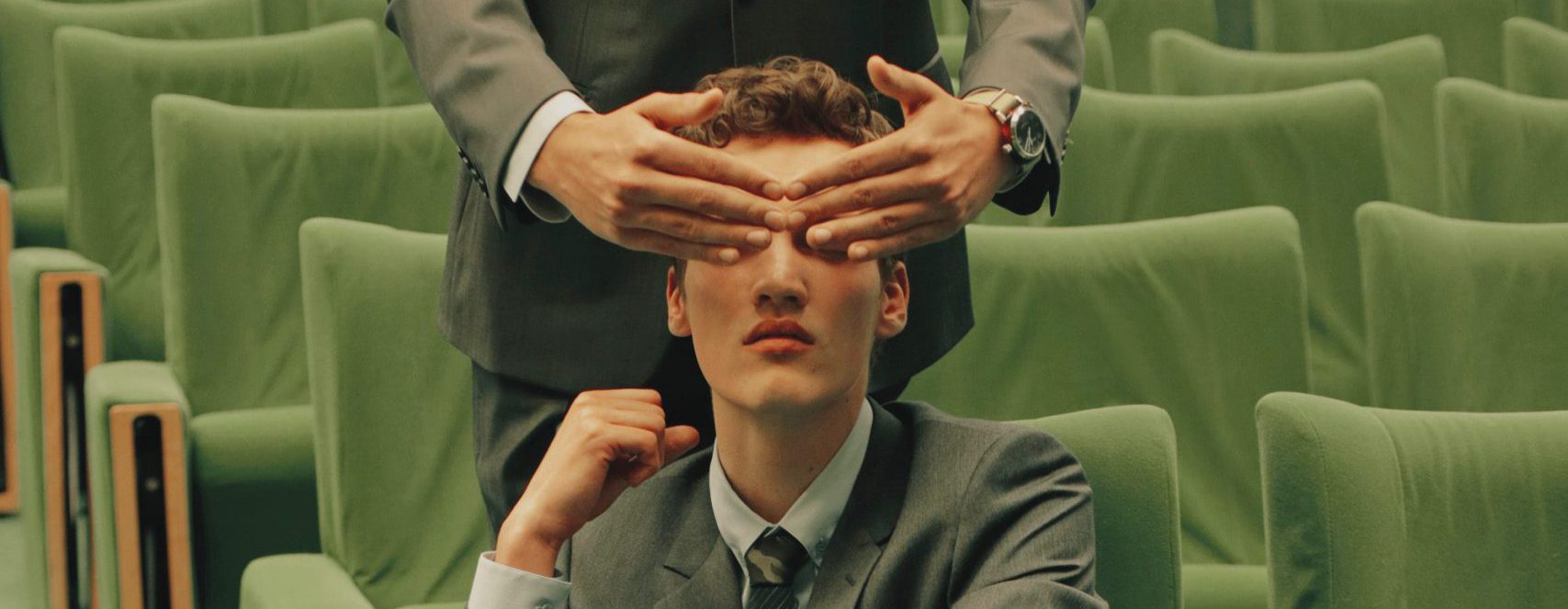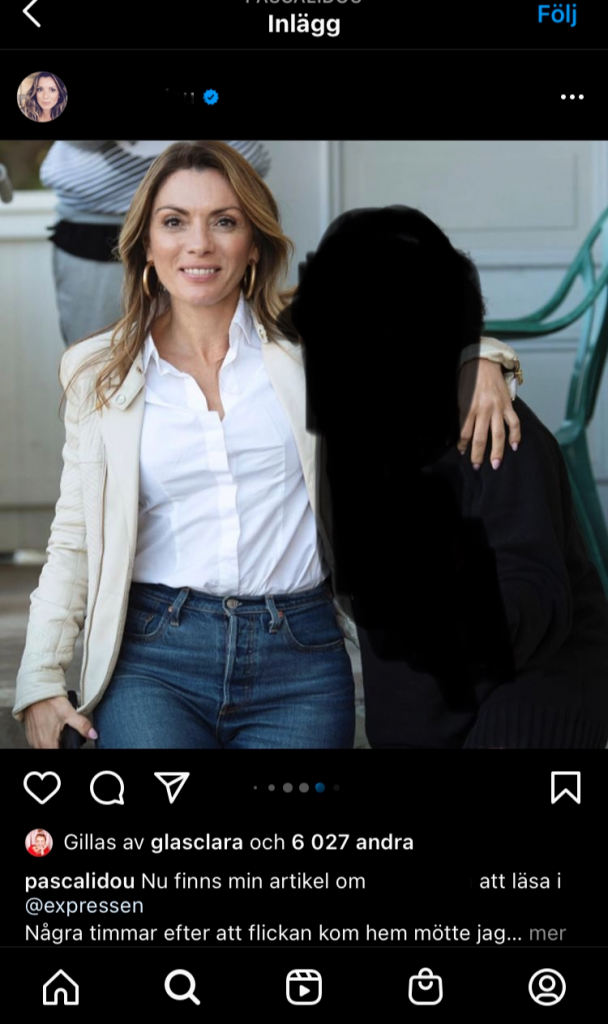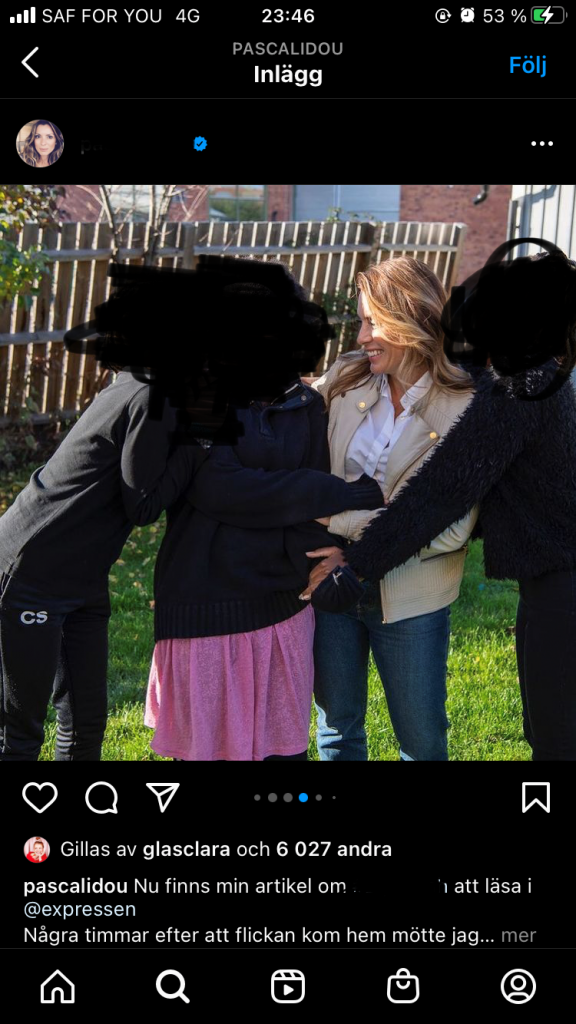In this third and final blog post about the ‘Digital Saviour Complex’, I will further elaborate on and discuss the media and social media reporting about 13-year old “Anna” (not her real name), that I have previously written about on this blog. I will discuss the case in further detail, continuing to critically examine the ways in which a vulnerable child in contact with social services who disappeared and returned was portrayed in both traditional news media and through social media platforms, applying critical postcolonial literature and highlighting similar issues excellently raised in the blog posts of other students at Malmö ComDev programme.
To briefly recap the story of 13-year old Anna, she disappeared from social services prior to a supervised visit to her parents in January 2021. At the time, Anna (and multiple siblings) had been apprehended by social services as there were suspicions of domestic violence at home. One of Sweden’s largest newspapers, Expressen, published both her real name and photos of Anna in both printed media and on their website. In addition, the freelance reporter assigned to cover the story also created a hashtag on social media to raise awareness about the missing girl. Then in October, 9 months after Anna’s disappearance, she returned to the home of her parents. It is at this point that the case of Anna takes an interesting turn. (Sveriges Radio, 2021)
Expressen and their reporter decided to not only publish the story that Anna had returned home and was in good health, but they decided to do so with photos and videos of the reunion, including imagery of Anna, her siblings and her father both rejoicing and crying after being reunited. Even more strangely, and as I discussed in my previous blog post, both Expressen and the reporter decided to post a series of photos in which the reporter was seen rejoicing with the family, hugging both Anna and some of her siblings (see photos below).
This received backlash on social media and in other news outlets. One example is an editorial in the newspaper ‘Dagens Nyheter’ in which a writer asked whether or not this type of ‘Emotion Porn’ is our only way to learn about vulnerable people’s lives? (Dagens Nyheter, 2021). This editorial expressed a view shared by many others on social media, that it feels uneasy to see videos of the crying and reunited family. That Anna looks shaken. That the images and videos appear to encourage the viewer/reader to rejoice about her return through the strong imagery, ignoring the fact there is alleged abuse at home. It is also mentioned that the family voluntarily calls the police who then come to apprehend the girl and bring her to her social service placement home, invoking feelings of the authorities separating Anna from her family again. (Dagens Nyheter, 2021)
As highlighted in this editorial, a lot of the constructive criticism is levied against both Expressen and the reporter, but that following the decision by Expressen to de-publish the name and photos of Anna and her family, most of the criticism is shifted towards the reporter. Sadly, this is accompanied by a lot of hate with racist undertones directed against the reporter who is of Greek origin (Dagens Nyheter, 2021). I will not discuss this further, but it is worth noting that the reporter appears to have difficulties in differentiating the constructive criticism with the hateful comments . This editorial argues that there is constructive criticism around the ethics surrounding the publishing, mixed with “allegations that [the reporter] is exploiting the child for clicks and her personal branding”. In the end, the editorial argues that although the publishing decisions made by Expressen is made in poor taste, intrusively and exploitative, although still asking whether this type of reporting is the only way vulnerable and marginalized people can be heard (Dagens Nyheter, 2021).
I would strongly argue that this is not true. Of course, one might argue that allowing Anna and her family to tell their story, including their perceived injustice by the social services, is what Expressen and Pascalidou should be doing. However, I and many others with me, would argue that it could have been done in a way that takes the privacy, vulnerability, age and integrity of Anna into account. Publishing both videos and photos of her and her family as she returns seems to serve no other purpose than to invoke feelings of the reader/viewer. The story of her well-being and return could easily have been told without her real name and that intimate/intrusive imagery. This is evidenced by the fact that Expressen later de-published all personal information and images of Anna and her family after the criticism levied against them, although the articles remained with added anonymity (Dagens Nyheter, 2021).
As pointed out in the aforementioned editorial, much of the criticism against Expresen disappears after they de-publish the personal details after the massive criticism, and not much more is said about the fact that they had 9 months to revisit their journalistic stance about publishing the name and photo of Anna. I do believe, however, that this completely misses the point. During those 9 months that Anna was gone, there was little criticism of them publishing the name and photo of Anna as she was missing and potentially at risk of exploitation and abuse. There was an interest to have this information public, making it possible for members of the public to help locate her as she could have been in danger. The criticism rather concerns the fact that both Expressen and the reporter decided not only to document the return of Anna, but to publish it with intimate imagery of crying family members and photos of the reporter hugging and rejoicing together with the family (Sveriges Radio, 2021). Although a mistake to post that intrusive story upon her return, that mistake was partly addressed when Expressen de-published her name and photos from all their articles around the case.
Many people then turned to criticize the reporter, as she to this day continues to refuse to remove those images and videos from her own Instagram account, which is an open account with more than 37,000 followers. As mentioned in my previous blog post, the reporter strikes back at any criticism levied against her, saying that she does not control what is published in Expressen, willfully ignoring the fact that people are primarily questioning why she herself keeps the same photos and Anna’s real name posted on Instagram (Sveriges Radio, 2021). When asked whether Anna, being 13 years old, can comprehend the long-term impact of her appearance in media and social media on her future privacy, the reporter simply replies by saying that no one can know what such long-term consequences look like. This, however, is where participatory storytelling must be counter-checked across ethical storytelling. Because just like is highlighted by classmate in one of her blog-posts the now digitized way of story-telling can leave a trace on the internet for many years (Boij, 2021), most likely resulting in her having this traumatic story of 9 months in hiding and her apprehension by social services available on the internet and traceable back to her for many years to come.
The reporter argues in an interview that she only provides her and other vulnerable and marginalized people with a voice, and that she does not see the difference between other news articles where children in vulnerable situations are named (Sveriges Radio, 2021). The reporter argues that people criticizing her are selective in their way of criticizing the publishing of imagery and stories of vulnerable children (Sveriges Radio, 2021), highlighting the case of a family appearing in Dagens Nyheter, as a family of four, with the two children being born in Sweden, are all about to be departed to Iraq (see below Tweet).
I want to argue that the reporter misses the point and any nuance in comparing these two cases. First of all, the whole family is affected by the deportation and there are no contented allegations of violence or abuse at home. The family in the story (embedded clip) are clearly unhappy with the deportation, but they are not visibly in shock and emotional distress like Anna and her family was. Therefore, there are two major differences in the way these two different stories are told. Firstly, the reporter in the news story about the family about to be deported does not insert himself/herself in the imagery or the news story. Secondly, the publishing of the deported family’s story is to advocate for the right of the children to stay with their parents in the country they were born in. The purpose of publishing the name and imagery of Anna and her distraught family is not at all clear and never adequately explained. Although it is has previously been alleged by Anna’s family and the reporter that the social services are wrong in their assessment and apprehension of Anna, and that the police and social services do not care enough to locate Anna during 9 months, this has nothing to do with publishing videos of crying family members or photos of the reporter embracing Anna and her sisters. At the moment of writing this, there has been no further reporting on the case of Anna by Expressen or the reporter, and there appears to be no attempt to conduct any investigative journalism into the alleged mishandling of Anna’s case by the social services or any reporting investigating the police’s search operations for Anna (or lack thereof) during those 9 months she was missing.
This is another clear indication to me that the reporter is less motivated in giving a voice to Anna and empowering her, but instead motivated by the logics of solidarity in what Chouliaraki refers to as ‘Post-Humanitarianism’ (2013, pp.1-24). Thanks to technological developments, and due to the hegemony of the market liberalism, humanitarian action and solidarity has become about self-expression, based “upon converging logics of consumption and utilitarianism and has thus become less about “others” and more about “us.” (Richey, 2018, p.629). Furthermore, new ICT has fostered in the age of ‘Digital Humanitarianism’ (Shringarpure, 2020) or ‘Everyday Humanitarianism‘ (Richey, 2018) – i.e. that humanitarian actions now include taking part in daily online activities, such as signing online petitions, donating, liking, tweeting and sharing links and articles in relation to any humanitarian crisis. Although originally conceived in relation to humanitarian action in the global south, I want to argue to the logic that underpins these concepts also applies to those wanting to affect social change or address ‘suffering’, no matter the location. This is evident in the case of the reporter and her decision to publish photos of herself hugging Anna, refusing to take down these photos and Anna’s name, and in her defence of her actions.
In my previous post I concluded that the reporter’s decision to not remove the photos and names of Anna and her family from her Instagram account, her decision to insert herself in these photos, and the reporter’s statements in defending her current stance, are indications that she is guided by the logic of the ‘Digital Saviour Complex’”. Coined by Shringarpure (2020), the concept of ‘Digital Saviour Complex’ is an updated and digital version of the so called ‘White Saviour Industrial Complex’ through which privileged individuals simultaneously mix “charity with profit” in order to validate existing privileges and “fulfil their sentimentalist narcissism” (Shringarpure, 2020, pp.184-185). In arguing that she is fighting the establishment through her actions (Sveriges Radio, 2021), the reporter seemingly believe she is doing good work for the benefit of Anna but fail to realise this as a form of self-expression and self-gratification that simply appear to fulfil her own sentimentalist narcissism without actually affecting any change in the condition for Anna and her family. By continuing to share Anna’s story in an intrusive way on social media, without any clear purpose for doing so now that Anna has resurfaced in good health, and without investigating and examining the decisions made by the social services when separating Anna from her allegedly abusive parents, the reporter sadly does little else than to make herself a ‘Digital Saviour’ who tries to affect change through social media ‘clicktivism’, although it is not clear how those photos on Instagram will help Anna’s desired cause to be released from social services and reunited with her family.
Sadly, there is a very interesting blog post and thematic that I would have liked to explore further in relation to the issues highlighted in this final blog post. Instead I will leave it as a concluding note, and that is that I would like to recommend this interesting blog post (Marozzi, 2021) and the issues highlighted therein. I think it is excellently highlighting the challenges with trying to ‘do good’ in the age of social media, as it instead becomes more of ‘looking good’. By paraphrasing the title of the blog post, one could also ask oneself: “Would the freelance reporter have reported on this case if she couldn’t share pictures on social media?” What do you think? Let me know in the comments below.
Personal reflections around the blogging process:
Before signing off, I would like to offer a few personal reflections around the blogging format and the blogging process. Although somewhat challenging for one that has never been blogging before, I have come to truly appreciate this exercise, format and the lessons it has provided me. Through the use of interactive features, participatory methods and illustrated texts, a good blogger can make their material much more accessible to an audience who might not otherwise consume this type of information, and in this way academic literature and debates can be made more accessible to readers.
I did, and still do, find it difficult to identify a more engaging way of blogging, as my texts were perhaps too long to be appealing to a majority of readers outside of the ComDev programme. Nonetheless, this was an excellent exercise because it has given me a lot of insights (and especially in seeing how others used their blog space) into how one can create insightful content which is more easily shared and digested than other formats of written texts I primarily use in my professional life (e.g. Fact sheets, briefing notes and donor reports).
List of references:
- Boij, C. (2021). Can we agree on a new standard for storytelling? Developing Narratives in Digital Times. 7 October 2021, accessed on https://wpmu.mau.se/nmict21group3/2021/10/07/can-we-agree-on-a-new-standard-for-storytelling/
- Chouliaraki, Lilie (2013) The Ironic Spectator: Solidarity in the Age of Post Humanitarianism. Cambridge: Polity Press.
- Dagens Nyheter (2021). Är känsloporr vår enda väg in i utsatta människors liv? 15 October 2021, accessed at https://www.dn.se/kultur/leonidas-aretakis-ar-kansloporr-var-enda-vag-in-i-utsatta-manniskors-liv/
- Marozzi, M. (2021). Would you volunteer if you couldn’t share pictures on social media? Developing Narratives in Digital Times. 19 October 2021, accessed on https://wpmu.mau.se/nmict21group3/2021/10/19/volunteer-pictures-on-social-media/
- Richey, L.A. (2018). Conceptualizing “Everyday Humanitarianism”: Ethics, Affects, and Practices of Contemporary Global Helping, New Political Science, 40:4, 625-639
- Shringarpure, B. (2020). Africa and the Digital Savior Complex. Journal of African Cultural Studies, 32:2, 178-194.
- Sveriges Radio (2021). Medierna: Pascalidou slår tillbaka, medial hysteri om Squid Game-lekar och NWT dubbelt klandrade för våldtäktsrapportering. 23 October 2021, accessed on https://sverigesradio.se/avsnitt/pascalidou-slar-tillbaka-medial-hysteri-om-squid-game-lekar-och-nwt-dubbelt-klandrade-for-valdtaktsrapportering


